A town renowned for its characteristic beauty and included among Italy's Most Beautiful Villages, Castelmezzano is one of the towns in the Gallipoli Cognato Regional Park and the Little Lucanian Dolomites.
Seen from a distance, small and charming, it immerses you in a fairy tale, whose protagonists are the Golden Eagle and the Owl, the Great Mother, the Anvil and the Lion's Mouth. Only the names are borrowed from fantasy, because the sculptures of the enormous sandstone boulders, which over time have been shaped by the wind and rain into these forms, have been there for centuries.
Guarding this medieval gem, with its steep stairways, narrow alleys and houses clinging to the rock, are the Piccole Dolomiti Lucane (Little Lucanian Dolomites), which reveal an enchanting landscape the higher you climb, following dedicated trails.

Castelmezzano
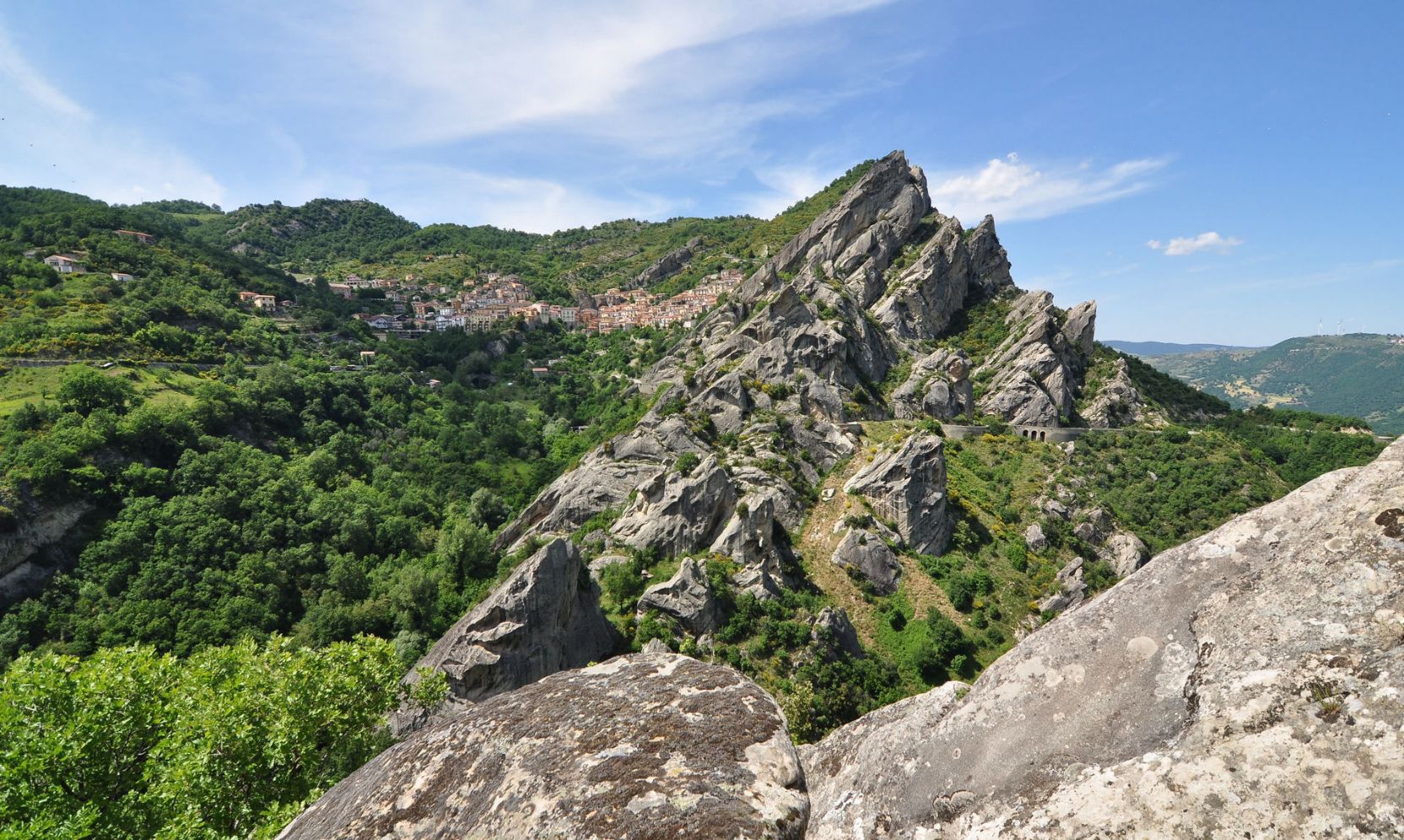
History
The name ‘Castrum Medianum’ (middle castle) reflects its history as a Norman fortress, centrally located between the castles of Pietrapertosa and Brindisi di Montagna.The origins of Castelmezzano are linked to the arrival of Greek colonists in the Basento Valley between the 6th and 5th centuries BC. Later, with the arrival of the Saracens in the 10th century AD, the local population was forced to flee and took refuge among steep rocks identified, according to an ancient tale, by a shepherd named Paolino, for whom it would have been easy to repel the invaders by rolling boulders down on them.
Following the Lombard occupation, Castelmezzano was invaded by the Normans (11th-13th centuries AD), who built the castle that gave the town its name. Over time, there were invasions by the Aragonese (14th-16th centuries AD) and several families played a decisive role in the history and development of the town, from that of Baron Giovanni Antonio De Leonardis to the De Lerma family. The conformation of the territory, due to the presence of natural shelters, favoured the development of Lucanian brigandage (19th century) in Castelmezzano as well.
Culture and Heritage
Every glimpse of the Lucanian Dolomites and every corner of the village of Castelmezzano hold stories of the people and events that have passed through it.The Norman-Swabian Castle dates back to the Norman period (11th-13th century AD) and was built as a stronghold in a central position between the castles of Pietrapertosa and Brindisi di Montagna. Only the ruins of the surrounding wall, raised on the rock, a cistern for collecting rainwater and the long, steep staircase carved into the rock, probably used as a lookout post from which to survey the Basento river valley below, are visible today.
Nature
Castelmezzano, like Pietrapertosa, with which it shares membership of the ‘Most Beautiful Villages in Italy’ association, is part of the Gallipoli Cognato and Piccole Dolomiti Lucane Regional Park.With its unspoilt landscapes and traces of a thousand-year history, the park is one of the most beautiful green spaces in the region, where you can discover and learn about all the secrets that nature can preserve, thanks to its important naturalistic, historical and ethno-anthropological value.
Covering an area of over 27,000 hectares, the green area includes the Gallipoli Cognato forest and the Montepiano woods, consisting of imposing specimens of turkey oak, fragrant lime trees, wild pear and apple trees, maples, alders and rare holly. Wolves, badgers, porcupines and wild cats live here, and birds such as peregrine falcons, buzzards and nuthatches can be spotted.
Religious heritage
In Castelmezzano, devotion is expressed in the mother church and in several chapels scattered throughout the charming village.The mother church of Santa Maria dell'Olmo (13th century), built entirely of local stone, dominates the main square. The majestic façade is in Romanesque style, clad in local stone and marked by four columns and a lintel, enriched with flowers, lions and double-headed eagles.
In a central position, a niche houses a fresco of St. Roch, patron saint of the village. With a single nave and four chapels, the interior houses works of great artistic value, such as the beautiful wooden statue of the Madonna dell'Olmo (13th century) and a painting of the “Holy Family” by the Lucanian painter Giovanni De Gregorio, known as Pietrafesa, one of the leading exponents of Lucanian painting between late Mannerism and Baroque, whose numerous works are scattered throughout the churches and convents of the region.
The Church of the Holy Sepulchre, probably of Byzantine origin, is one of the oldest in Castelmezzano. It houses the wooden statue of the Madonna dell'Ascensione (14th century), which, according to legend, was found by two fishermen on the seashore. The Madonna herself asked them to take her to Castelmezzano.
Also worth seeing are the chapels of Santa Maria, Madonna dell'Annunziata, San Marco and Santa Maria “Regina Coeli”.
Flavours and culinary traditions
In Castelmezzano the cult of food and typical dishes has been handed down for generations.The typical product of the village is sausage, which comes in many varieties. Other meat dishes are also delicious, among which lamb with herbs and kid with grilled potatoes predominate.
Prepared especially for the celebrations in honour of Saint Lucy the Martyr on 13 December, the “cuccia” is a very tasty dish made with broad beans, wheat, chickpeas and grass peas. The crunchy honey “crostole” are also typical, a local wedding dessert.
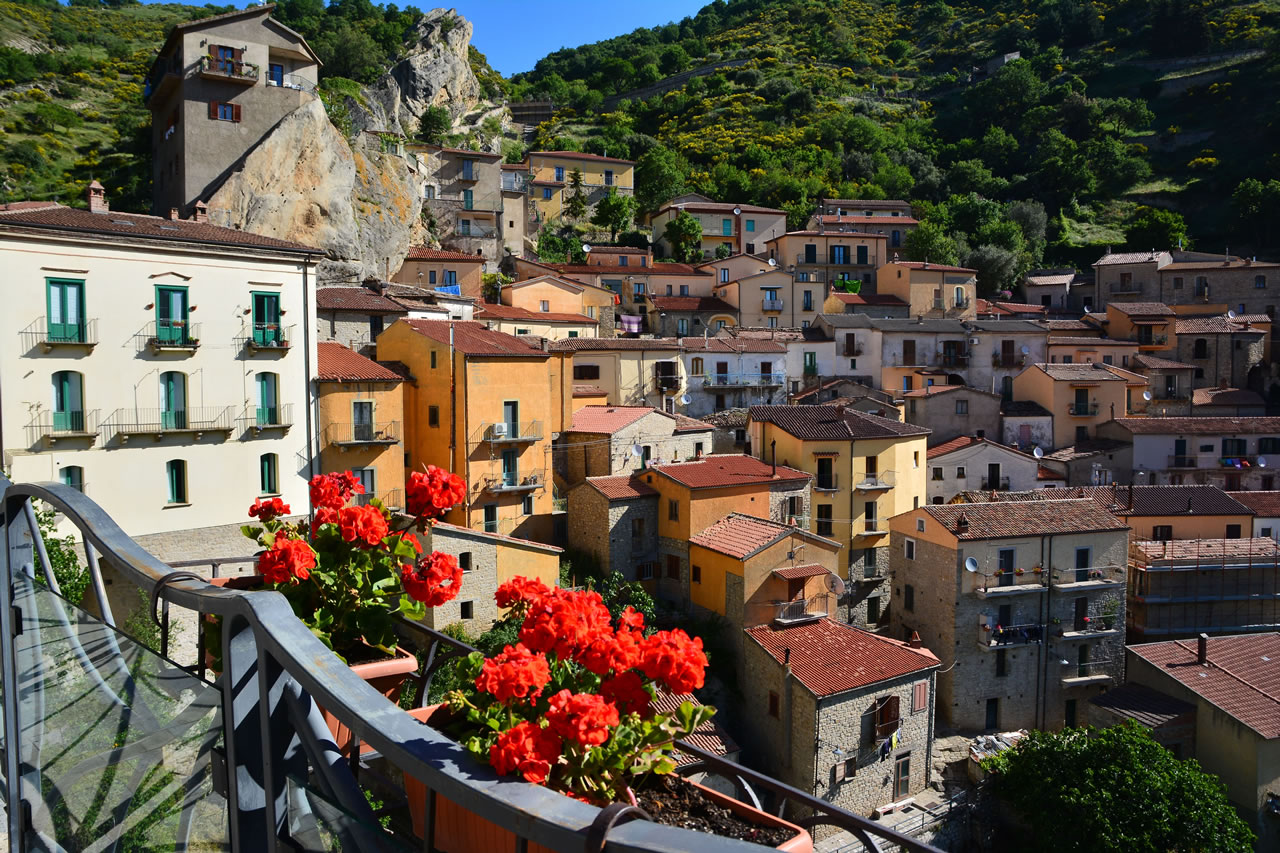
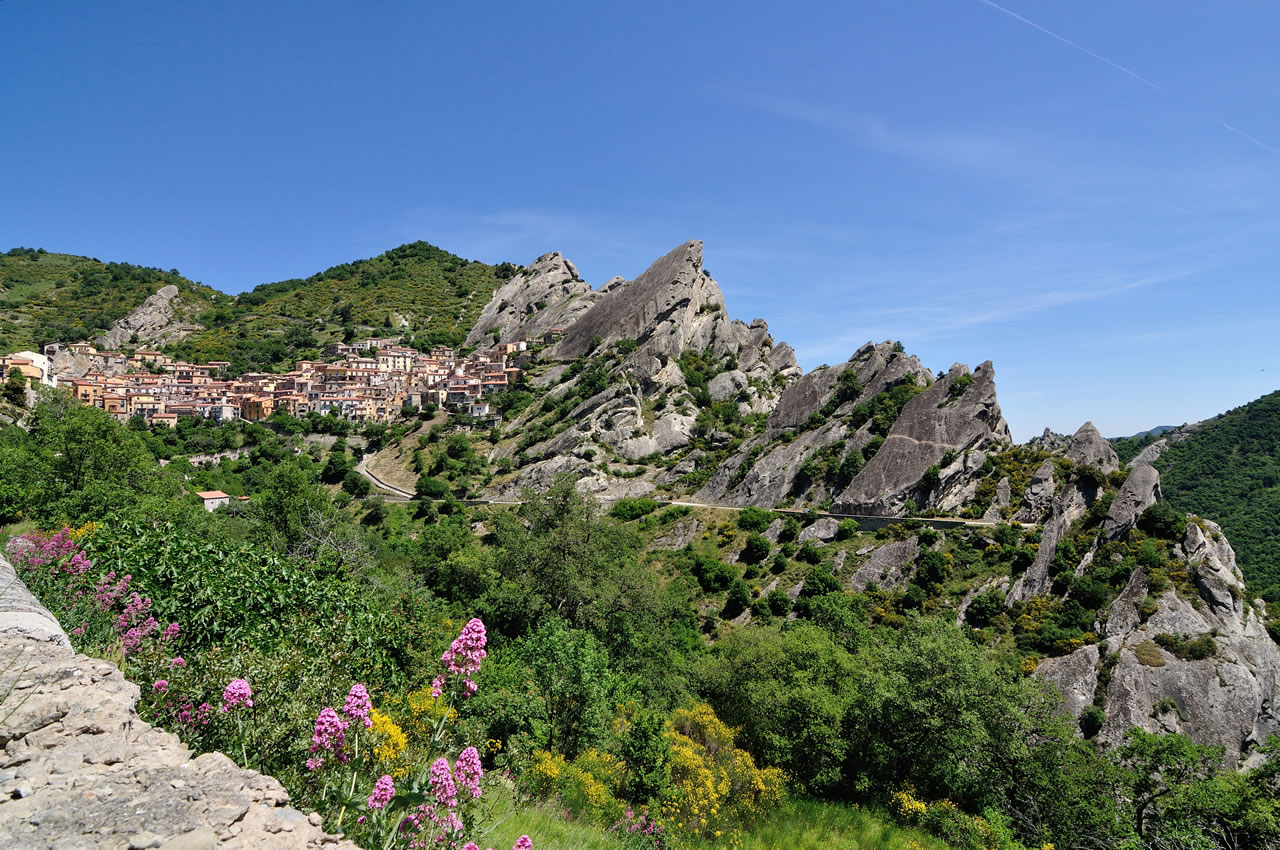
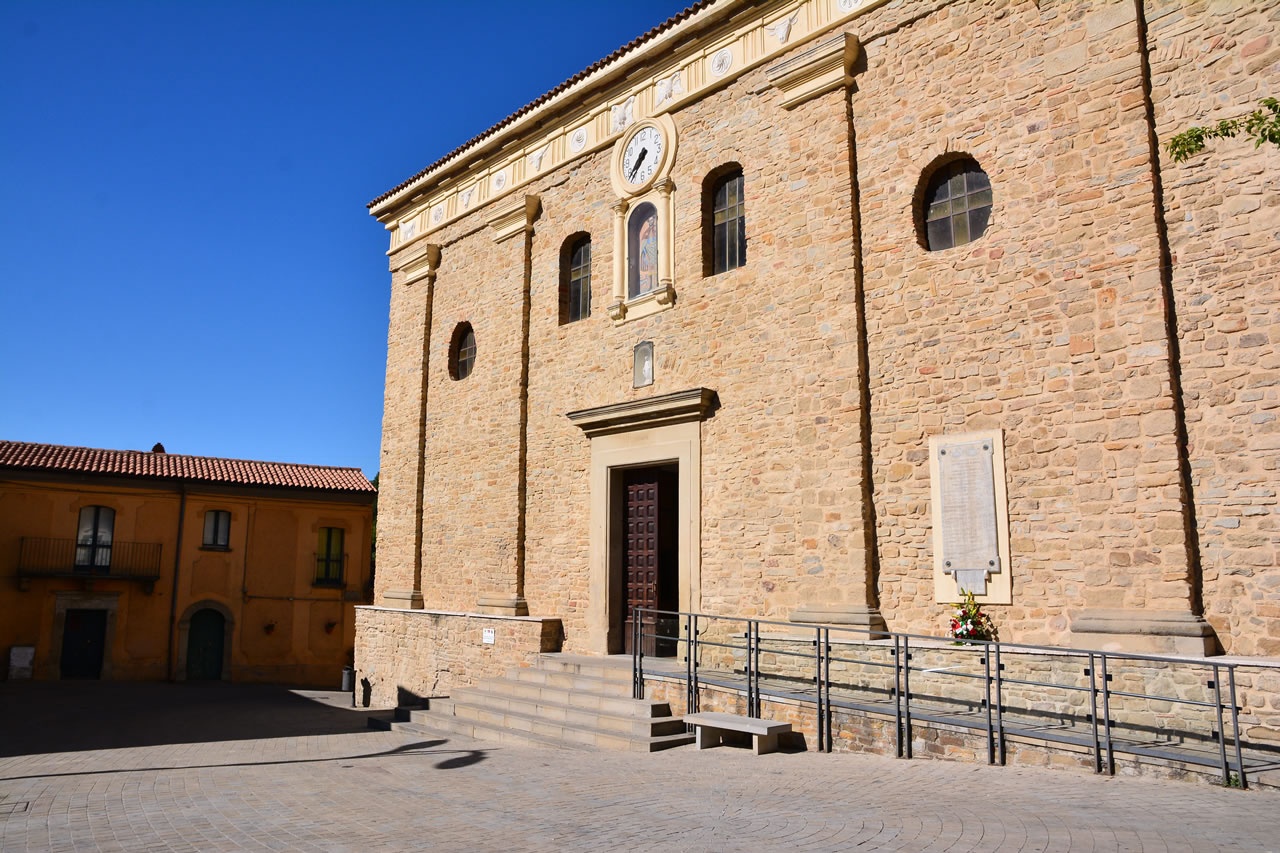
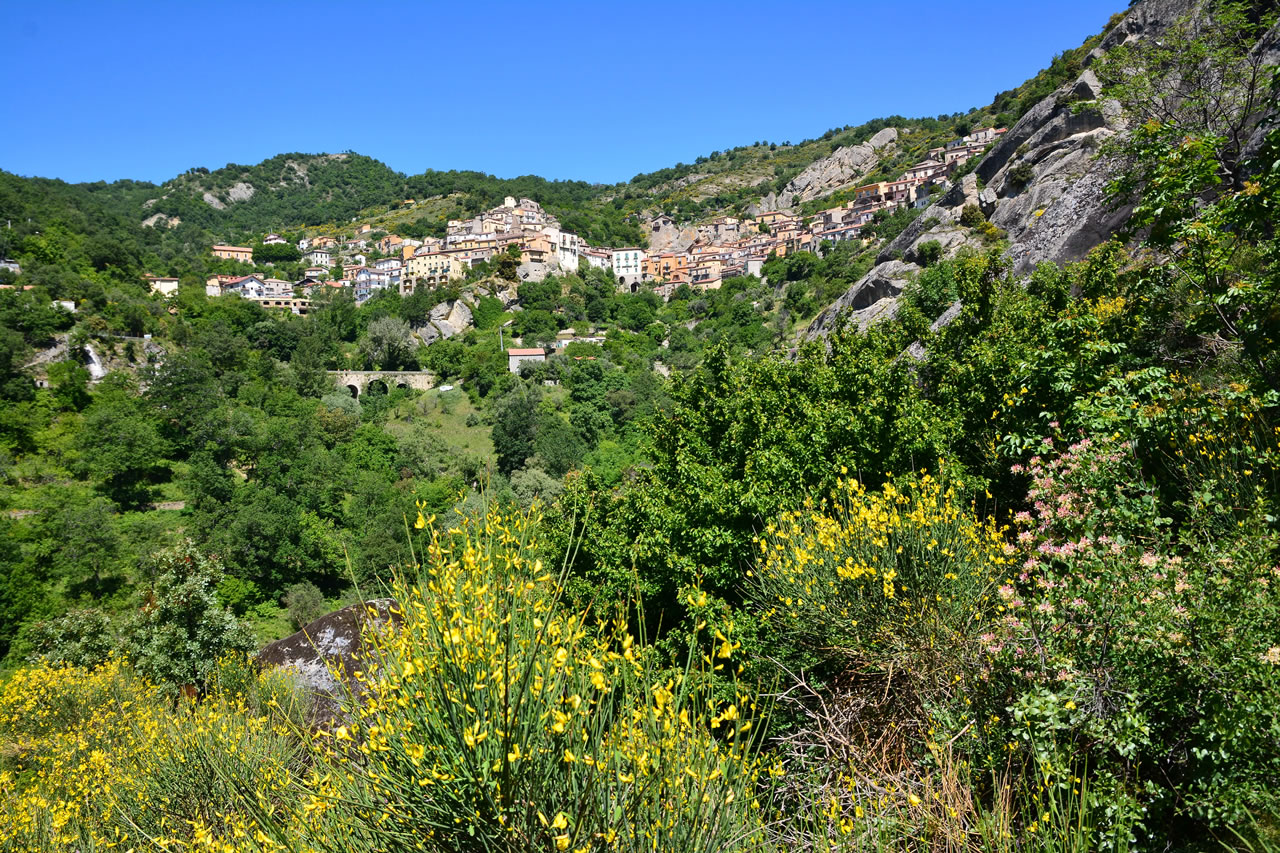
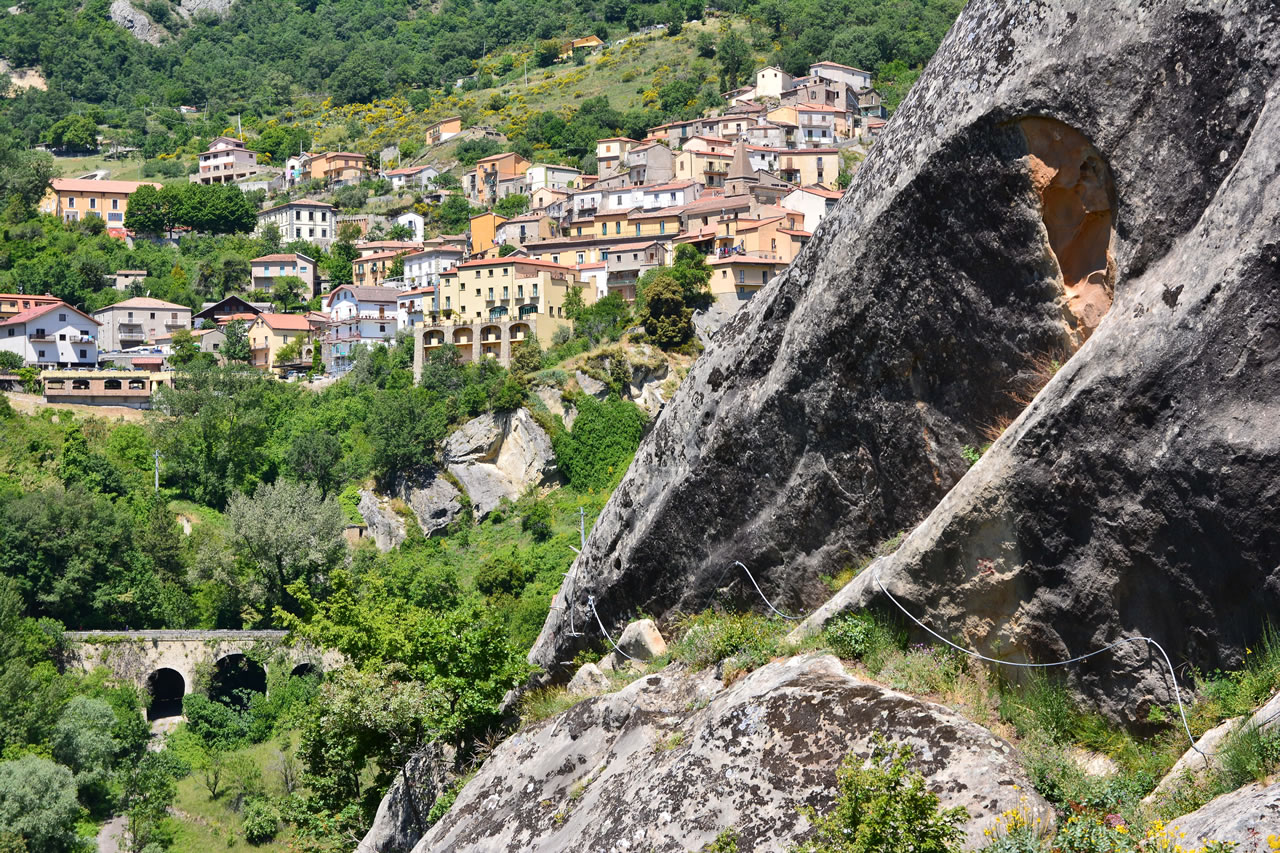
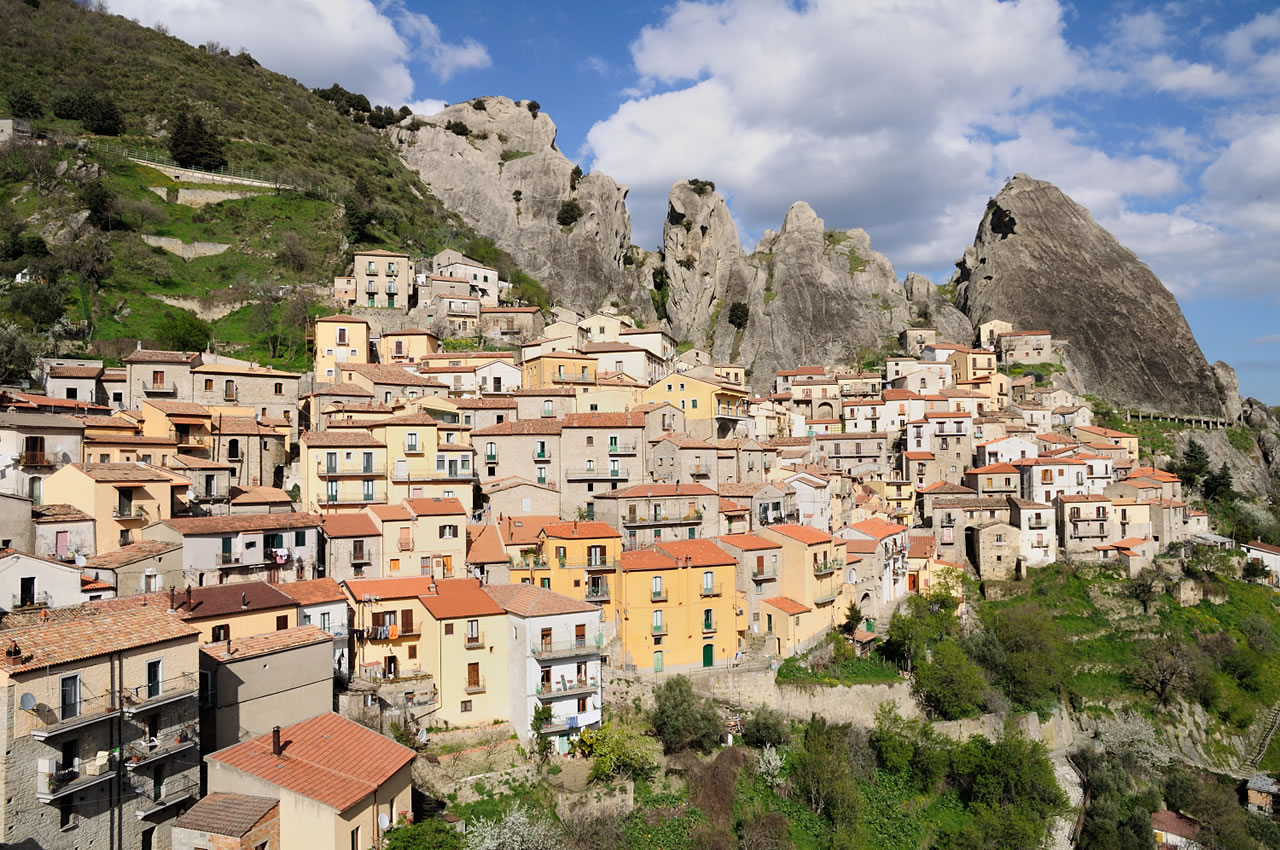
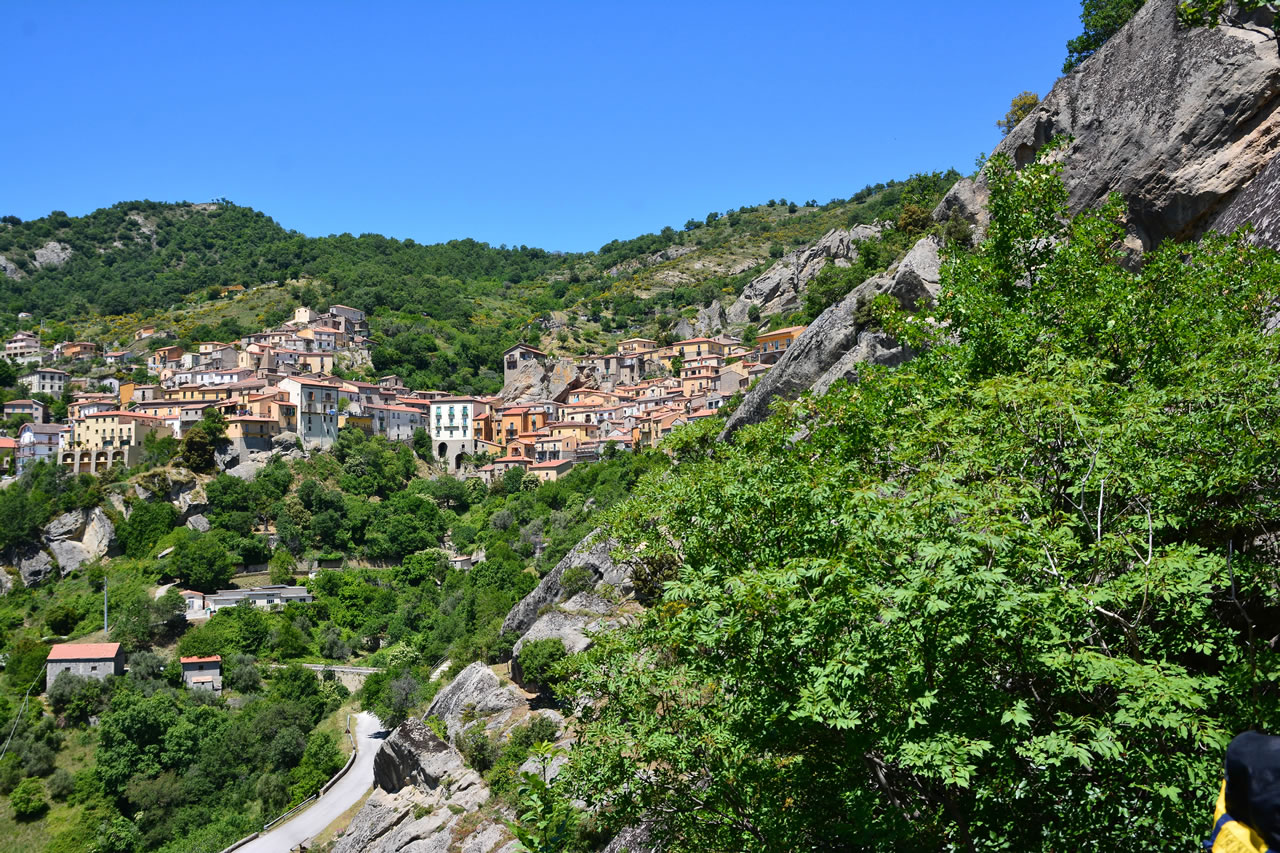
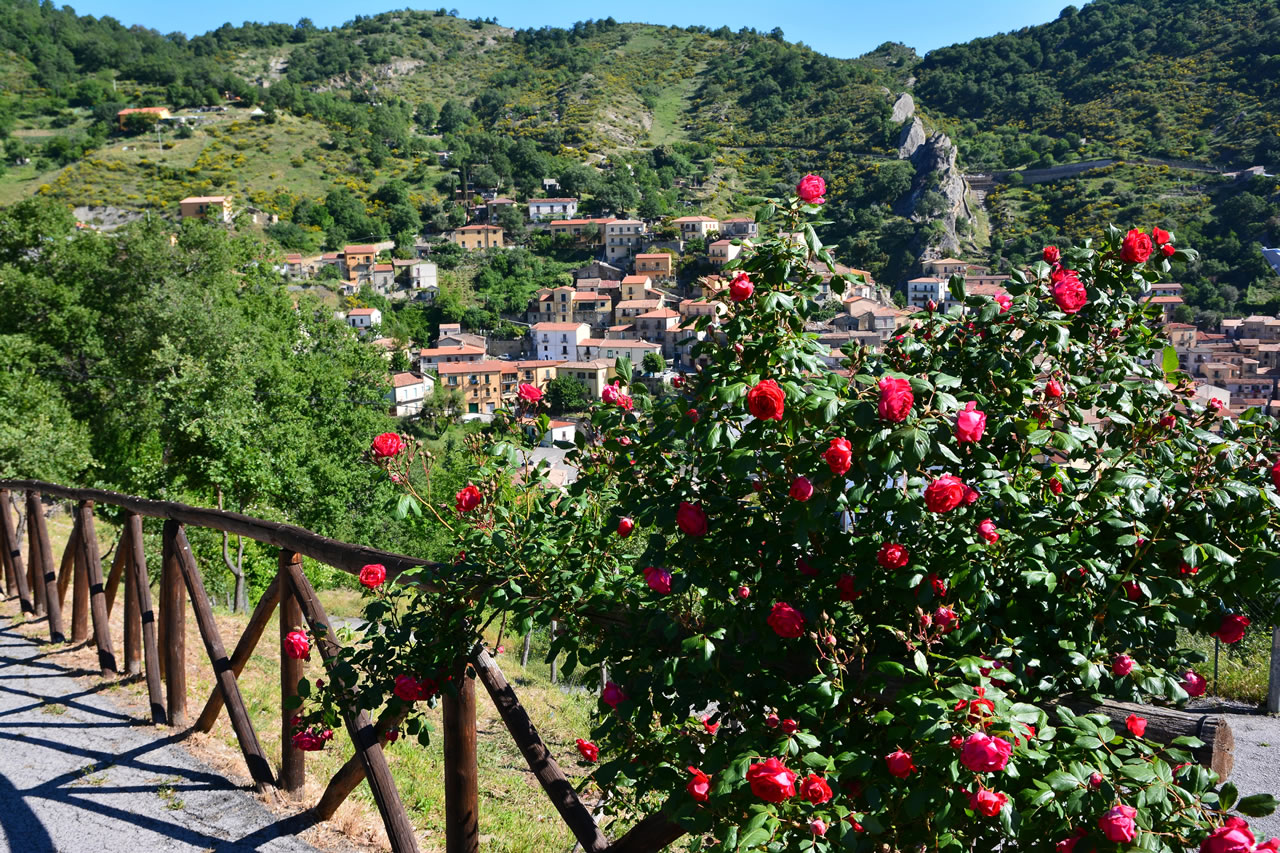
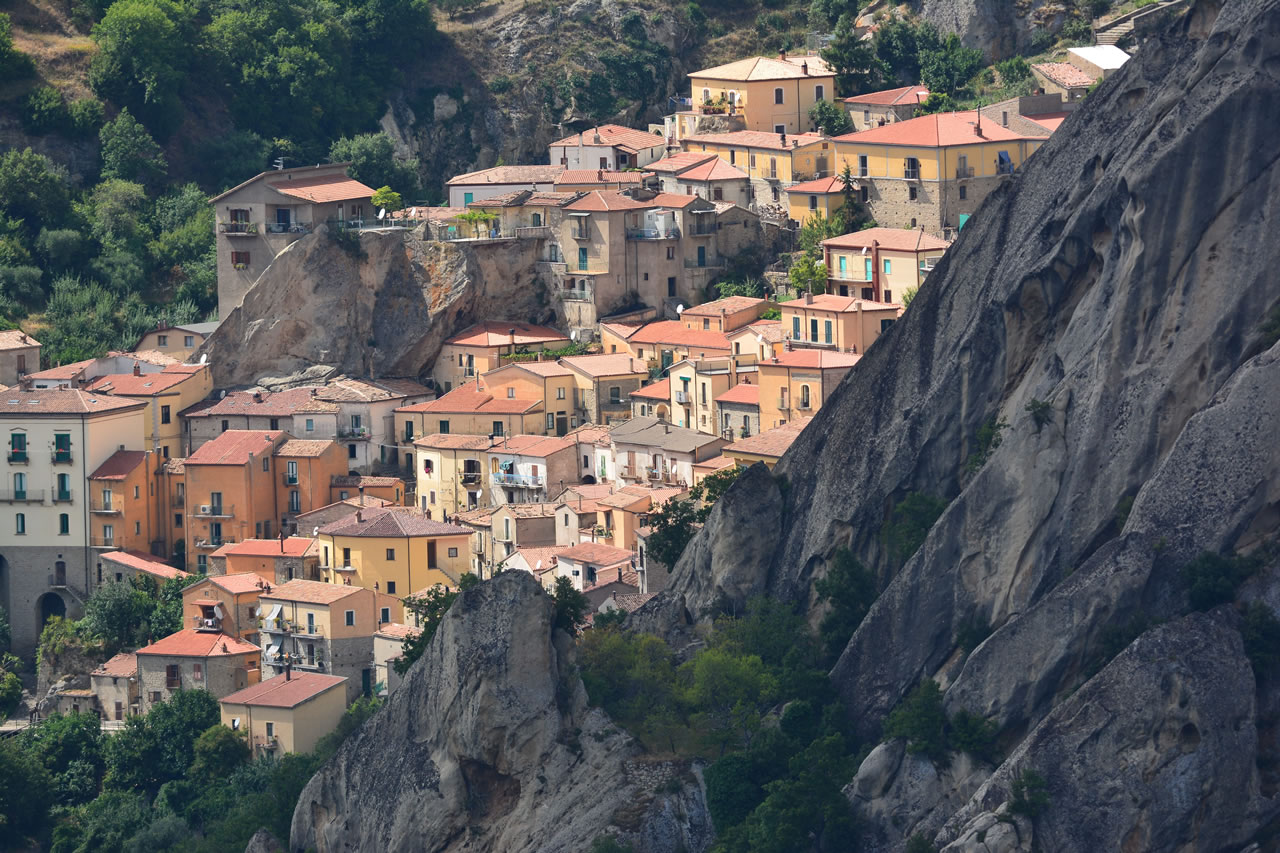
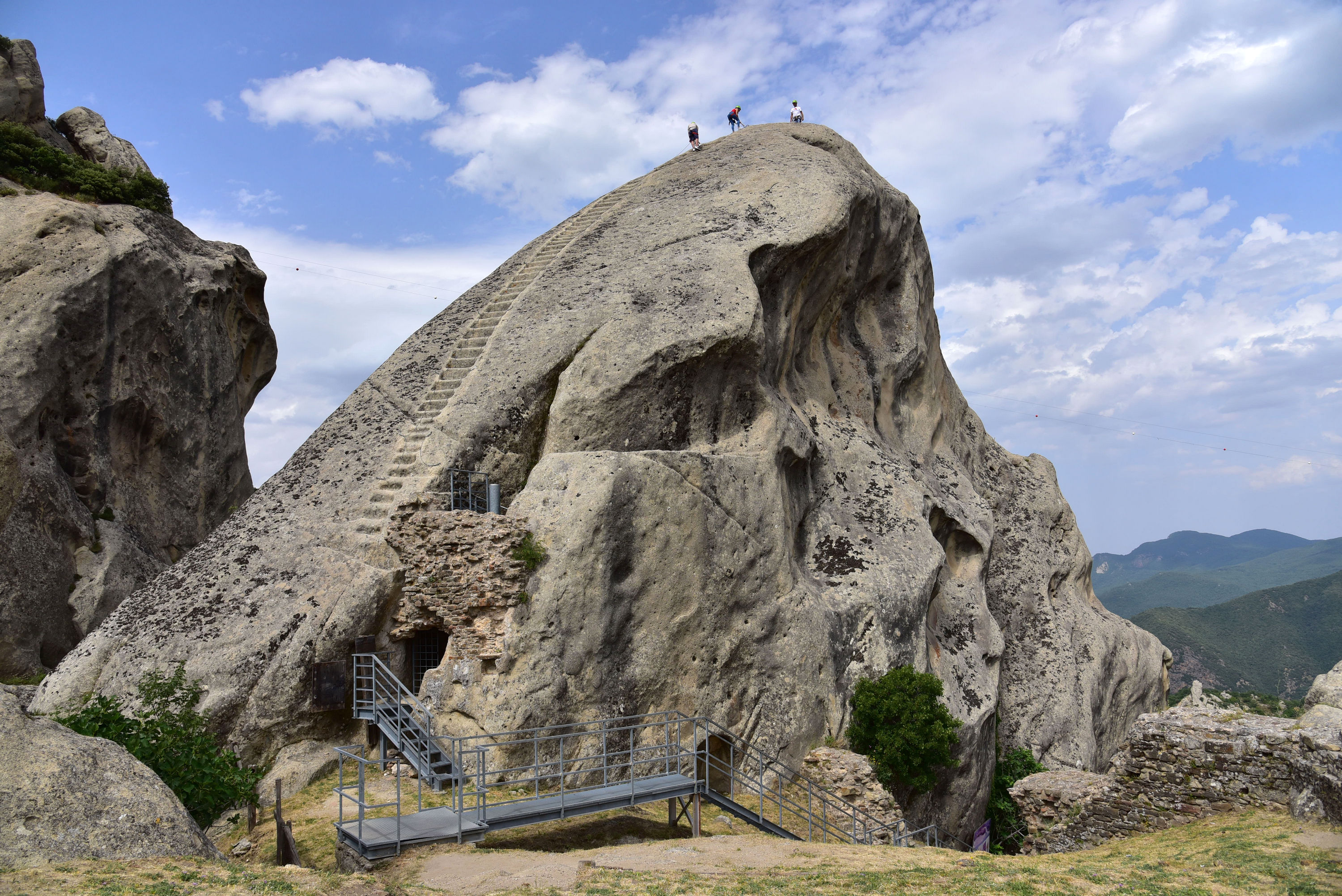
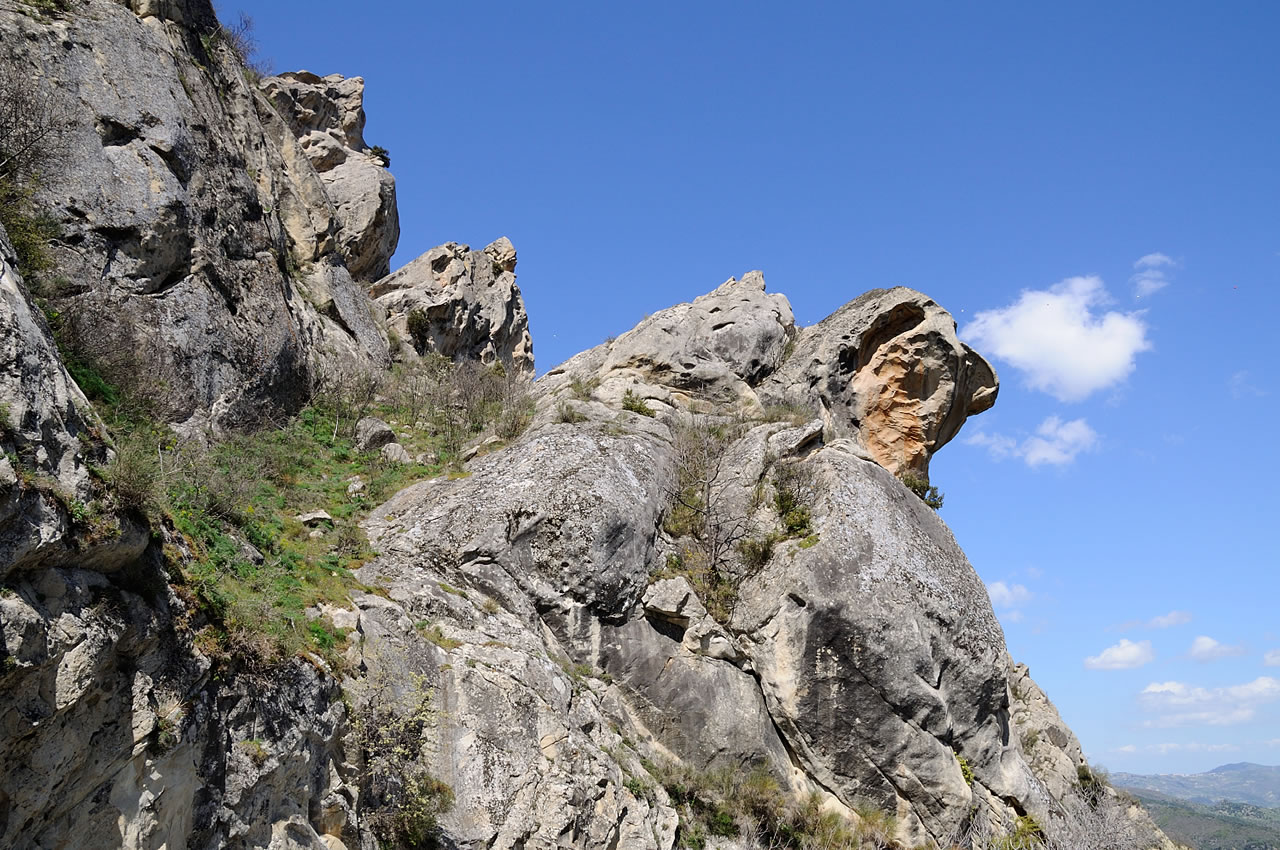
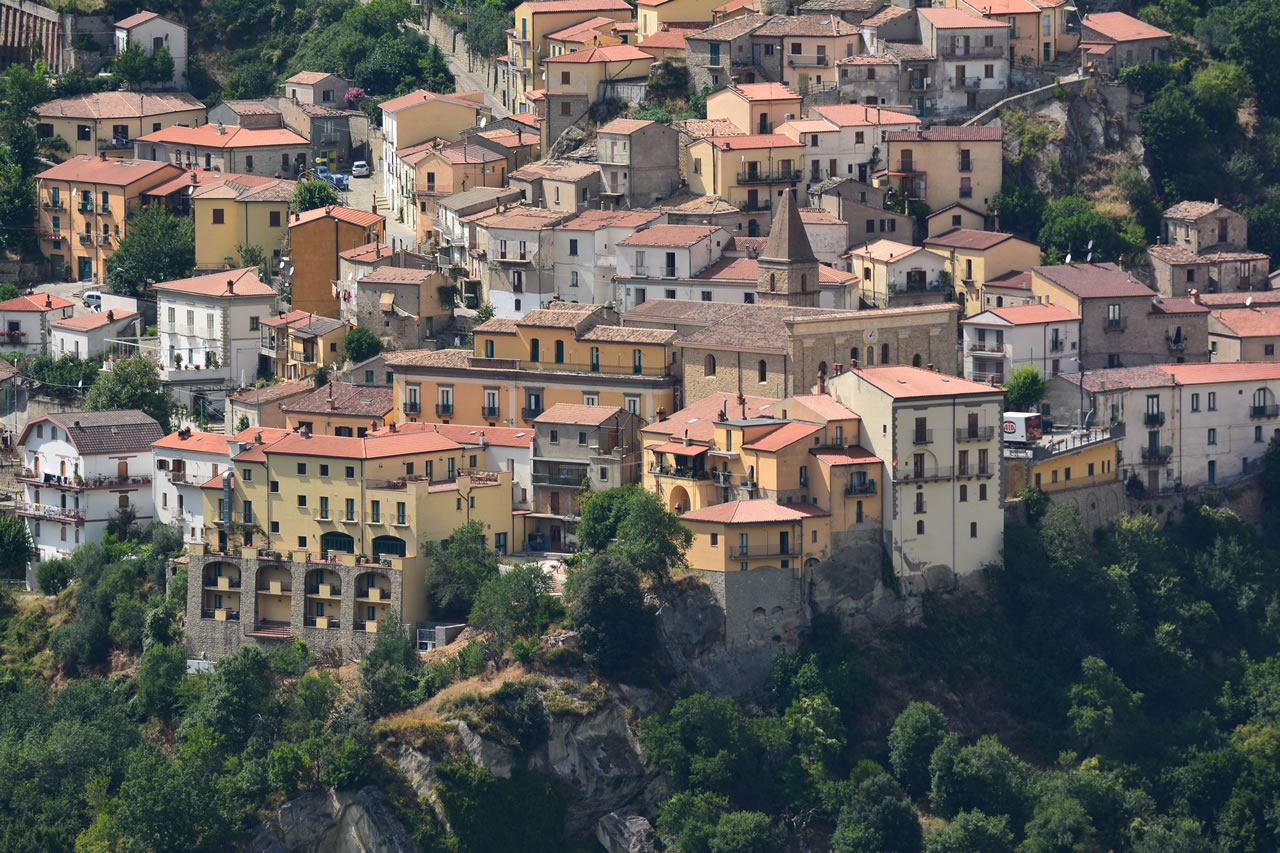

 Sito Italiano
Sito Italiano